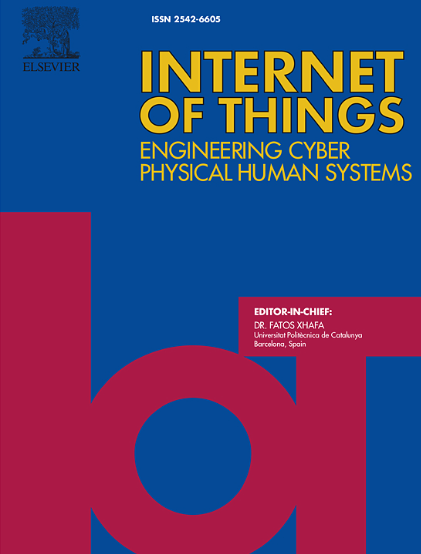Similarity-driven truncated aggregation framework for privacy-preserving short term load forecasting
IF 6
3区 计算机科学
Q1 COMPUTER SCIENCE, INFORMATION SYSTEMS
引用次数: 0
Abstract
Accurate short-term load forecasting (STLF) is essential for the efficient and reliable operation of power systems, enabling effective scheduling and integration of renewable energy sources. Federated learning (FL) offers a collaborative, privacy-preserving approach for distributed model training by avoiding data sharing among sources. However, existing FL methods for STLF often rely on clustering techniques for highly variable residential data, which struggle to effectively handle data diversity, privacy constraints, and anomalous model updates. This study addresses these concerns and presents a similarity-driven truncated aggregation (SDTA) algorithm designed for STLF at macro-level sub-stations. SDTA enhances model alignment by computing layer-wise cosine similarity among client updates and mitigates outliers through truncated mean aggregation, reducing overfitting and improving robustness. The algorithm integrates differential privacy (DP) mechanisms to protect model updates and applies cosine-similarity-based filtering to safeguard against adversarial attacks. Extensive simulations on real-world substation data validate that SDTA significantly outperforms standard FL algorithms such as federated averaging (FedAVG) and federated distance (FedDist). Under conditions without privacy constraints, SDTA achieves a mean absolute percentage error (MAPE) of 2.63%, surpassing FedAVG and FedDist with MAPE of 2.89% and 3.11%, respectively, with faster convergence. Under strict DP constraints, SDTA maintains high forecasting performance with a MAPE of 4.02%, outperforming FedDist and FedAVG by 9.7% and 20.4%, respectively. Furthermore, SDTA exhibits substantial resilience under adversarial conditions, achieving a MAPE reduction of 20.5% over FedAVG when 40% of edge nodes are compromised. Moreover, the study examines the robustness of SDTA against random client selection scenarios, illustrating its resilience and practical applicability in real-world settings, particularly when client selection rates are below 60%.
保护隐私的短期负荷预测相似性驱动截断聚合框架
准确的短期负荷预测(STLF)是电力系统高效可靠运行的关键,是实现可再生能源有效调度和整合的关键。联邦学习(FL)通过避免数据源之间的数据共享,为分布式模型训练提供了一种协作的、保护隐私的方法。然而,现有的用于STLF的FL方法通常依赖于高度可变的住宅数据的聚类技术,难以有效处理数据多样性、隐私约束和异常模型更新。本研究解决了这些问题,并提出了一种针对宏观分站STLF设计的相似驱动截断聚合(SDTA)算法。SDTA通过计算客户端更新之间的分层余弦相似性来增强模型对齐,并通过截断均值聚合来减轻异常值,减少过拟合并提高鲁棒性。该算法集成了差分隐私(DP)机制来保护模型更新,并应用基于余弦相似度的过滤来防止对抗性攻击。对实际变电站数据的广泛模拟验证了SDTA显着优于标准FL算法,如联邦平均(FedAVG)和联邦距离(FedDist)。在没有隐私约束的条件下,SDTA的平均绝对百分比误差(MAPE)为2.63%,超过了fedag和FedDist的平均绝对百分比误差(MAPE)分别为2.89%和3.11%,收敛速度更快。在严格的DP约束下,SDTA保持了较高的预测性能,MAPE为4.02%,分别比FedDist和fedag高出9.7%和20.4%。此外,SDTA在对抗条件下表现出相当大的弹性,当40%的边缘节点受到损害时,其MAPE比fedag降低了20.5%。此外,该研究还检验了SDTA对随机客户选择场景的稳健性,说明了其在现实环境中的弹性和实际适用性,特别是当客户选择率低于60%时。
本文章由计算机程序翻译,如有差异,请以英文原文为准。
求助全文
约1分钟内获得全文
求助全文
来源期刊

Internet of Things
Multiple-
CiteScore
3.60
自引率
5.10%
发文量
115
审稿时长
37 days
期刊介绍:
Internet of Things; Engineering Cyber Physical Human Systems is a comprehensive journal encouraging cross collaboration between researchers, engineers and practitioners in the field of IoT & Cyber Physical Human Systems. The journal offers a unique platform to exchange scientific information on the entire breadth of technology, science, and societal applications of the IoT.
The journal will place a high priority on timely publication, and provide a home for high quality.
Furthermore, IOT is interested in publishing topical Special Issues on any aspect of IOT.
 求助内容:
求助内容: 应助结果提醒方式:
应助结果提醒方式:


